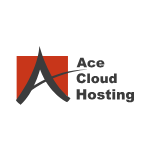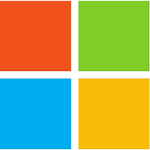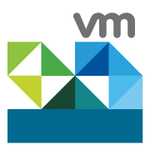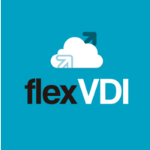List of Best VDI Software
Showing 10 of 15 productsV2 Cloud is a software that allows businesses to securely access and manage their applications and data from anywhere, at any time. This innovative solution combines advanced technology with user-friendly features to streamline workflow and improve t...Read V2 Cloud Reviews
Ace Cloud VDI - your all-in-one solution for a seamless is a virtual desktop infrastructure. With user-friendly features and top-notch security, Ace Cloud VDI revolutionizes the way businesses operate remotely. Say goodbye to hardware limitations and...Read Ace Cloud VDI Reviews
Microsoft Azure is a cloud computing platform that provides a vast range of services for businesses to build, deploy, and manage applications and services through a global network of data centers. With its flexible and scalable solutions, Azure allow...Read Microsoft Azure Reviews
DesktopReady is a new software designed to enhance your desktop experience. With its innovative features and user-friendly interface, DesktopReady is the go-to solution for boosting productivity and efficiency. Say goodbye to cluttered desktops and w...Read DesktopReady Reviews
VMware vSphere is a virtualization software that enables businesses to streamline their IT infrastructure and optimize the performance of their applications. With its advanced features and user-friendly interface, vSphere simplifies the management an...Read VMware vSphere Reviews
Vagon Teams is a collaborative solution for your teams remote work needs. With Vagon Teams, you can seamlessly is a ly work together from anywhere, all on one platform. No matter the distance, boost productivity and stay connected with Vagon Teams. S...Read Vagon Teams Reviews
Nutanix, a leading software company, offers innovative solutions for cloud computing and digital transformation. With its robust technology and unparalleled expertise, Nutanix empowers organizations to achieve seamless is a operations, enhancing thei...Read Nutanix Reviews
flexVDI is a virtual desktop infrastructure solution for businesses of all sizes. With its user-friendly interface features, flexVDI offers a seamless is a virtual desktop experience. Say goodbye to complex setups and hello to a streamlined virtual e...Read flexVDI Reviews
vCloudPoint is a software solution that enables seamless desktop virtualization for businesses of all sizes. With its advanced technology and user-friendly interface, vCloudPoint streamlines your computing infrastructure and boosts productivity like...Read vCloudPoint Reviews
Leostream, a revolutionary software designed to streamline and optimize your virtual desktop infrastructure. With powerful features is a management tools, Leostream simplifies the process of managing and delivering virtual desktops, allowing you to b...Read Leostream Reviews
- What Is VDI Software?
- Top Reasons Why Businesses Need VDI Software?
- What Are the Top Key Features of VDI Software?
- What Are the Top Benefits of VDI Software?
- What Are the Steps to Choose the Right VDI Software?
- What Are the Types of VDI Software for Different Industries?
- What Are the Technology Trends for Best VDI Software?
- What Are the Deployment Options for VDI Software?
What Is VDI Software?
Virtual Desktop Infrastructure (VDI) software is a technology that allows users to connect to their devices and apps from anywhere in the world, using any device and any internet connection. Users can view their whole desktop environment, including all programs and data, as if it were on their workstation using VDI software.
All data is stored on a virtual desktop image, which is subsequently replicated across the network and hosted on a remote server. The user can then access their virtual desktop from any device by just logging in with their credentials.
As a result, VDI management tools are an appealing technology for companies wishing to give their employees with a secure, versatile, and low-cost solution for data and application access. The software also eliminates the need to acquire and install extra hardware, making it a very cost-effective solution.
Furthermore, VDI software provides users with a high level of security because organizations can manage who has access to remote desktops from their server. The top VDI software is thus the ideal solution for remote working.
Top Reasons Why Businesses Need VDI Software?
1. Increased speed and reliability of the system: VDI software speeds up access to apps and data by reducing the time it takes to set up applications and resources.
2. Cost savings: Virtual desktop infrastructure software lowers the costs of maintaining hardware infrastructure, such as servers, while still enabling access to resources.
3. Platform independence: VDI management tools connects physical and virtual machines independent of operating system.
4. Enhanced security: VDI software protects data and applications by introducing a virtualization layer between each user session and the actual physical hardware.
5. Flexibility: Virtual desktop infrastructure software can easily and efficiently handle changes in user requirements.
6. Scalability: VDI management tools enables rapid session deployment and scalability to match changing user requirements.
7. Disaster recovery: The utilization of the best VDI software serves to effectively address the potential risk of data loss in the occurrence of a catastrophic event by offering a centralized mechanism for both backing up and restoring data.
8. Improved user experience: VDI management software ensures a uniform and dependable user experience, irrespective of the operating system or hardware employed.
9. Simplified management: Virtual Desktop Infrastructure (VDI) software plays a crucial role in streamlining the management of an IT infrastructure, effectively minimizing the time and effort expended in this process.
10. High availability: Virtual Desktop Infrastructure (VDI) software plays a crucial role in guaranteeing uninterrupted accessibility to applications and data, even in the occurrence of hardware or network failures.
11. Application portability: Virtual Desktop Infrastructure (VDI) software facilitates the seamless transfer of applications and data across different computing environments.
12. Support for multiple concurrent users and devices: Virtual Desktop Infrastructure (VDI) software facilitates the effective administration of numerous simultaneous user sessions through a unified platform.
13. Power and energy savings: VDI management software plays a crucial role in mitigating the power and energy consumption associated with application delivery.
14. Optimized resource usage: The best VDI software plays a crucial role in enhancing resource utilization, including memory, processing power, and storage capacity, leading to a reduction in operational expenses.
15. Automated provisioning: The utilization of virtual desktop infrastructure software facilitates the optimization of user account establishment and the allocation of applications and resources, resulting in a more efficient procedure.
What Are the Top Key Features of VDI Software?
The top key features of VDI (Virtual Desktop Infrastructure) software are:
1. Scalability - The utilization of VDI software enables enterprises to efficiently and flexibly tailor and expand their virtual desktop infrastructure in accordance with the requirements of individual users.
2. Security - The best VDI software offers a robust and segregated setting for applications and data, using encryption and authentication procedures to effectively thwart any illegal attempts to get access.
3. Availability - The virtual desktop infrastructure software provides a robust level of availability, ensuring uninterrupted operation and offering reliable backup solutions in the event of a catastrophic event.
4. Flexibility - The VDI software exhibits high adaptability and offers extensive compatibility with diverse operating systems and applications, catering to the distinct requirements of various users.
5. Cost-effectiveness - VDI management software is a viable and economically efficient approach to facilitate the operational needs of an expanded remote workforce.
6. User experience - VDI management tools enable a uniform user experience across many devices, exhibiting improved performance in comparison to tangible hardware.
7. Desktop virtualization - The top VDI software facilitates the virtualization of desktop operating systems, so enabling users to conveniently access their desktop environments at any given moment and from a wide range of devices.
8. Mobility - Virtual Desktop Infrastructure (VDI) software facilitates the seamless access of users' desktop environments and applications across various distant devices, provided they have an internet connection. This technological advancement has the potential to enhance workforce efficiency.
9. Performance - The primary objective of VDI software is to uphold the optimal functioning of programs. This is accomplished by the incorporation of various technologies like caching and thin-client protocols, which effectively mitigate latency issues.
10. Management - The utilization of the top VDI software facilitates the efficient administration and upkeep of virtual desktops, incorporating functionalities such as resource allocation and automated software updates.
What Are the Top Benefits of VDI Software?
1. Improved Flexibility: Virtual Desktop Infrastructure (VDI) offers enterprises increased flexibility for their workforce. This technology facilitates the remote utilization of virtual desktops across various devices connected to the internet, enabling employees to engage in work activities from their residences, while traveling, or within the company premises.
2. Cost Savings: The implementation of virtual desktops enables enterprises to effectively mitigate hardware expenses, diminish the necessity for physical upgrades, and therefore lessen the accompanying maintenance expenditures.
3. Improved Security: The utilization of the best VDI software enhances the security measures implemented within an organization by safeguarding data against unauthorized duplication or downloading onto physical devices.
4. Enhanced Performance: The utilization of VDI management software enhances the efficiency of data computation, hence diminishing the need on tangible resources such as memory, processing capacity, and storage.
5. Greater Scalability: VDI management software facilitates the seamless adjustment of an organization's technological requirements, allowing for swift scalability in response to fluctuations in user numbers and the availability of hardware resources.
6. Faster Deployment: The implementation of desktop virtualization in businesses enables the rapid deployment of new virtual desktops derived from a singular image, hence expediting user productivity.
7. Improved Disaster Recovery: The prompt highlights the ability of enterprises to swiftly restore virtual desktop images in the event of a disaster, hence enabling uninterrupted operations.
What Are the Steps to Choose the Right VDI Software?
1. Identify your business requirements: It is imperative to ascertain the rationale for the necessity of IT virtualization, as well as the specific nature of the workloads that will be executed. When evaluating a system, it is important to take into account various elements, including the anticipated level of utilization, the ability to scale resources, and compatibility with pre-existing systems.
2. Consider the cost and performance: It is imperative to do a thorough comparison of numerous vendors in order to ascertain the optimal value for one's financial investment, as different providers present distinct packages and pricing strategies. Assess the performance parameters, such as download speed, virtual machine compatibility, and image display resolution.
3. Know the available platforms: It is important to take into consideration the compatibility of virtualization solutions with various operating systems and hardware platforms. It is vital to ascertain that the provider offers software products that are compatible with the existing system versions.
4. Determine the security features: The utilization of IT virtualization and remote access has the potential to introduce significant network security vulnerabilities. Therefore, it is imperative to ensure that the vendor possesses the capability to furnish the requisite encryption and authentication methods in order to safeguard your data.
5. Evaluate service and support: It is advisable to engage the expertise of a technical specialist in order to assess various vendor offers with respect to factors like as pricing, customer service, scalability, and upgrade choices.
What Are the Types of VDI Software for Different Industries?
There are a variety of software solutions available for virtual desktop infrastructure (VDI) for different industries.
Here are some common types of VDI software available:
1. Desktop-as-a-Service (DaaS): Desktop as a Service (DaaS) allows anyone to securely access and operate their desktop apps and data from any internet-connected device. It is occasionally referred to as hosted virtual desktops or server-side applications. This solution is highly advantageous for firms that employ remote workers, since it enables users to access data without the need for repetitive downloading and installation of software.
2. Cloud-based Desktop: The utilization of cloud-based desktop solutions offers businesses a convenient and effective method to optimize resource allocation, enhance adaptability, and save expenses associated with server infrastructure and IT hardware.
The implementation of this particular VDI management software solution obviates the necessity for organizations to uphold their own physical and virtualized desktops, while concurrently affording users the ability to access their data and apps.
3. Software as a Service (SaaS): Software-as-a-service (SaaS) refers to a specific software deployment paradigm in which applications are hosted and remotely controlled on the hardware infrastructure of a service provider specializing in software-as-a-service.
This technology offers significant advantages for enterprises seeking to optimize the deployment of their applications while mitigating the expenses and intricacies associated with managing numerous desktops.
4. Thin Client Software: Thin client software, alternatively referred to as client-server software, is a server-centric VDI management tools specifically developed to facilitate the execution of client-server applications, including but not limited to SQL Server, Sharepoint, and several others.
This particular program facilitates the convenient implementation of applications, eliminating the need for manual installation on individual servers. It achieves this by employing centralized management and ensuring that the software remains current with the most recent versions.
5. Remote Desktop Services (RDS): RDS is a VDI solution designed for enterprise use, providing users with a secure means of remotely accessing the complete range of apps and files within their organization's desktop environment. When the user establishes an internet connection, their desktop becomes safely visible on their smartphone.
This particular software is well-suited for enterprises that employ a significant number of geographically dispersed personnel, as it guarantees continual availability of essential data and applications for users.
What Are the Technology Trends for Best VDI Software?
1. Platform Support: Support for a diverse array of platforms, including desktops, laptops, tablets, and smartphones, emerges as a crucial technological trend within the realm of optimal VDI management tools.
2. Cloud Integration: In recent times, the significance of incorporating cloud integration into virtual desktop infrastructure (VDI) software has witnessed a notable surge. There is a growing trend among various the top VDI software to use cloud connectivity as a means to mitigate expenses related to server and storage.
3. Scalability: Numerous VDI software solutions are specifically engineered to possess a high degree of scalability, incorporating load-balancing functionalities that enable enterprises to seamlessly incorporate more users and resources in accordance with their requirements.
4. Security & Compliance: The significance of security and compliance in the realm of VDI software has escalated, placing a heightened focus on encryption, authentication, and data protection measures to guarantee the security of data.
5. Automation: Automation is an essential feature that should be present in top-tier VDI software, as it serves to minimize the need for manual operations and streamline the management and maintenance of the virtual environment. This encompasses functionalities such as automated provisioning and patching, along with self-service alternatives for users.
What Are the Deployment Options for VDI Software?
The deployment options for VDI software are:
1. On-site: The conventional approach involves the practice of hosting software on-site, which grants complete authority over the virtual desktop infrastructure (VDI) environment.
2. Cloud-hosted: This paradigm entails the hosting of software in the cloud, so enabling customers to leverage the scalability offered by cloud infrastructure.
3. Local hardware-based VDI: This paradigm entails the physical presence of hardware components, including servers, virtualization hosts, storage systems, and hypervisors, within the premises.
4. Hybrid cloud-based VDI: This concept entails the utilization of a hybrid cloud architecture to facilitate the hosting of the Virtual Desktop Infrastructure (VDI) infrastructure. This approach allows for a combination of both local and cloud-hosted solutions to be employed.










